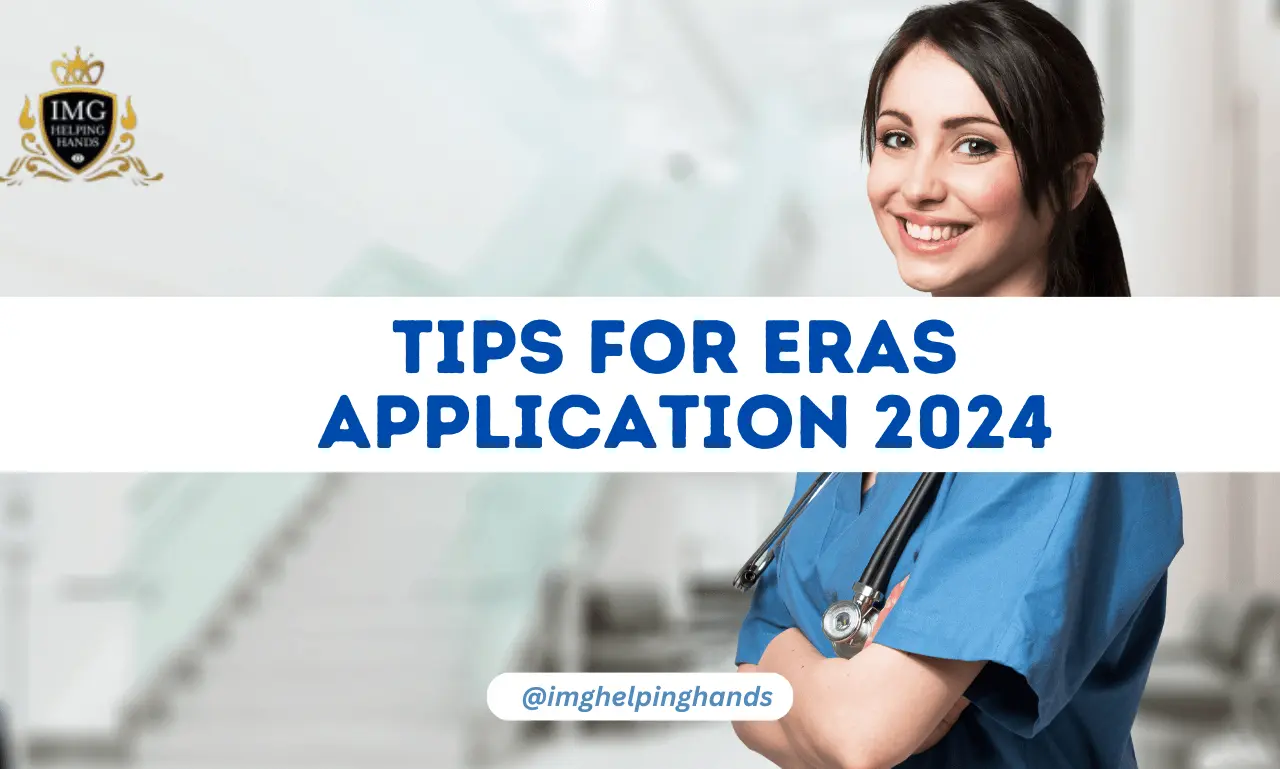
Protected: EXCLUSIVE LIST OF INTERVIEW QUESTIONS FOR “MATCH”TIPS AND TRICKS TO ACE YOUR INTERVIEW!
There is no excerpt because this is a protected post.

In the dynamic realm of medical education and residency pursuits, the Electronic Residency Application Service (ERAS) Application emerges as a game-changing digital platform. It’s your ticket to the coveted world of U.S. residency programs, uniting medical students and graduates under one virtual roof. Join us on an exhilarating journey through the intricacies of ERAS 2024 as we unfold the mysteries and offer insights to elevate your application game.
The journey begins with the coveted ERAS token. For International Medical Graduates (IMGs), this key is obtained from ECFMG, while U.S. students secure it from their medical school’s Designated Dean’s Office. This token holds the power to open doors to a world of opportunities.
While there’s no hard deadline, submitting your application before programs commence reviews is a strategic move. Program reviews for Match 2024 commence on September 27 at 9 AM EST. The submission window spans from September 6, 2023, to September 27, 2023. Aim to submit between these dates for optimal impact, considering that letter uploads might take a few days to reflect.
Timing is pivotal in the residency race. Ensure your application gets noticed by submitting early, as program reviews commence at different times. The moment to shape your ERAS journey is now, crafting a compelling tale that mirrors your path as a future physician. Embrace the Experiences Canvas as your masterpiece, emphasizing quality over quantity, while ERAS enriches context for a resonating narrative. Let the 2024 Match cycle be defined by the depth and vibrancy of your entries, utilizing optional features like “Primary Focus” and “Key Characteristic” to etch an unforgettable story.
Crafting powerful experiences is a vital aspect of your journey:
• Concise Impact: Keep descriptions brief and impactful with bullet points.
• Action Verbs: Energize with action verbs, creating vivid descriptions.
• Detail Polishing: Proofread for flawless grammar and spelling.
• Essence of Role: Capture roles and responsibilities succinctly.
• Bullet Point Hack: Structure in a Word doc for clarity, then transfer.
• Balance Form and Function: Use bullets or paragraphs as content dictates.
• Depth and Skills: Showcase skills, responsibilities, and character development.
Imagine each experience as a thread woven into the tapestry of your application. These focus areas are the hues that lend depth and vibrancy to your narrative.
They’re the elements that make your narrative dynamic, vivid, and authentic.
ERAS empowers you to steer your course by expressing up to three U.S. divisions of interest:
The Power of Paragraph: Sharing Your ‘Why’:
Share motivations in a 300-character paragraph.
In the realm of preferences, signaling programs is your strategic masterpiece. Each applicant holds a limited number of signals – use them judiciously to indicate your keen interest in specific programs. This is your chance to stand out, demonstrating your commitment to programs that truly align with your aspirations.
Capture your educational path, including Higher Education and Medical Education. Undergraduate and Graduate details are essential. Medical school specifics like country, institution, degree earned, and dates matter. Include Postgraduate Training such as ACGME-accredited residencies and fellowships. Consider Honorary/Professional Society Memberships to enhance your profile.
Highlight noteworthy accomplishments, from medical school awards to broader achievements. Provide context to each accolade, whether academic or extracurricular, state or international.
Detail any US state medical licenses if applicable, and address any professional inquiries. Share your specialty board certifications.
Publications:
Display your research impact with publications. Peer-reviewed journal articles and abstracts matter. Include all relevant publication details for a strong impression.
The act of certifying and submitting your ERAS CV is akin to sealing an envelope filled with your medical journey, aspirations, and achievements. Let’s delve into the intricacies of this process and explore the measures that guarantee a seamless submission.
Perfecting Details: Flawless Precision:
Before certification, review meticulously to eliminate spelling and grammar errors. The certified CV is unchangeable, so accuracy matters.
Harness Professional Editing Power:
Like entrusting health to experts, seek advisors for structural and grammatical excellence. Elevate quality and showcase your best profile.
Visual Checkpoint: Optimal Presentation:
Before submitting, preview or print your CV. Ensure impeccable formatting and legibility. Proactively address discrepancies for a polished presentation.
Certify and Submit: Your Final Pledge:
When confident in your CV’s accuracy and quality, take the confident step to certify and submit. Seal your application and signify your readiness for residency programs.
Embrace Your ERAS Odyssey with Confidence
As you embark on crafting your ERAS application, remember each detail shapes your medical portrait. Certifying your ERAS CV is the final artistic flourish, marking your dedication’s culmination. Precision, professional editing, and visual checkpoints enhance your presentation. Your ERAS application embodies passion, dreams, and the journey to become a skilled physician. Embrace this phase with support from resources like IMG Helping Hands. With commitment shining through, you’re ready to stride toward residency dreams. Opportunities await, guided by the medical community. Together, we thrive – your journey, a testament to your remarkable self.
Get our most valuable tips right inside your inbox, once per month!

There is no excerpt because this is a protected post.

There is no excerpt because this is a protected post.
There is no excerpt because this is a protected post.

There is no excerpt because this is a protected post.

There is no excerpt because this is a protected post.

There is no excerpt because this is a protected post.
Payment Methods
Buy with Confidence
© IMG Helping Hands Copyrights 2024